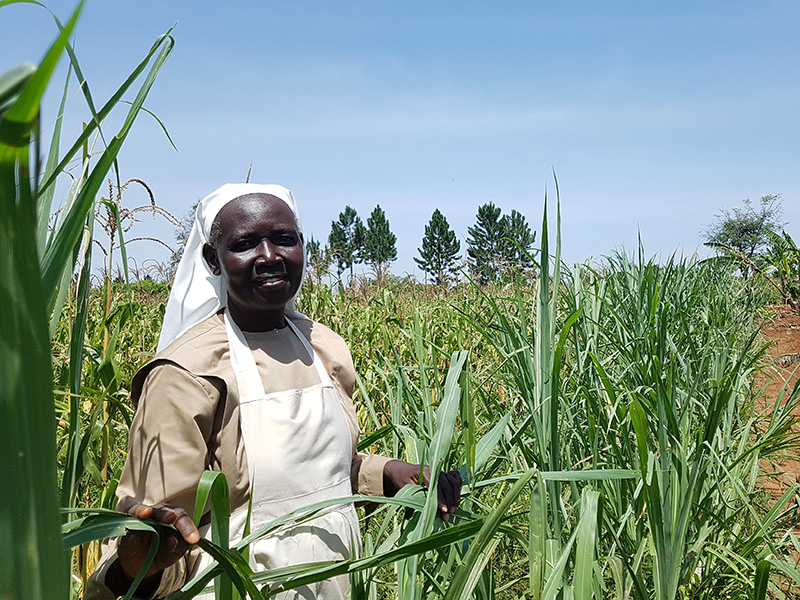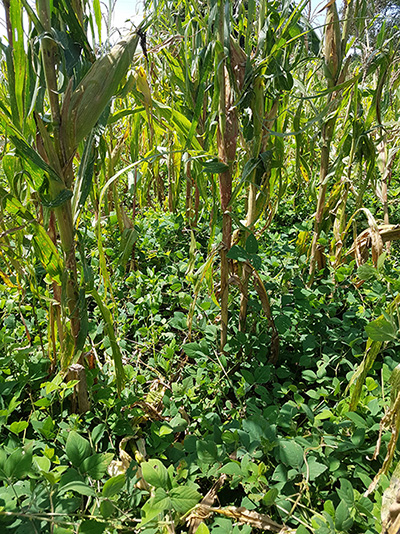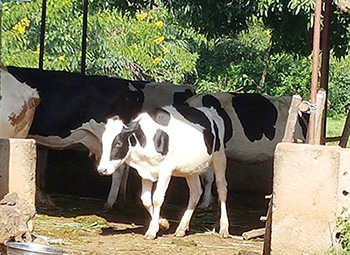Sister Gonzaga Achieng: Testimony of an unlikely Push-Pull farmer
For two years, Sister Gonzaga Achieng managed the front desk of a guesthouse ran by the St Benedict catholic congregation in Mbale district, eastern Uganda. In 2013, she received a group of visitors from Kenya, and in conversation, she learnt that they were Push-Pull farmers who were in Uganda for an exchange visit.
“I was intrigued and deeply struck by their testimonies about Push-Pull, and how the technology had changed their lives. There and then, I made a decision to make a career shift from the office job to farming. I spoke to the Mother Superior of the congregation, Mary Scholastica Kotono, and asked to be transferred to the congregational farm in neighbouring Tororo district, with the intention of becoming a Push-Pull farmer,” explains Sr Gonzaga.

She started her mission on a section of the farm that had been abandoned due to Striga infestation. Establishing the initial Push-Pull plots was labour intensive, but she suceeded in setting up two plots (one conventional, and the other climate smart) with the support of fellow sisters. Soon, her efforts started bearing fruit. During the first season, she harvested 3.5 bags of maize, impressive for a piece of land that was hitherto unproductive. During the subsequent season, the yield was up to a total of seven bags. Even more impressive, there was little or no trace of Striga on the plot. In addition, Sister Gonzaga learnt how to compost the biomass from Push-Pull plots and use it as manure to improve the banana plantations and other sections of the farm, in effect reducing the need and expense of buying synthetic fertilizer.
“I also received training on how to use the Push-Pull companion plants, Napier and Desmodium, as fodder for the congregation’s livestock. The results were instant. The milk production from the cows increased. We now not only have adequate milk for our own use, but surplus to sell as well. With this additional income, we are able to sufficiently meet overheads for other activities on the farm, for instance employing more help,” explains Sister Gonzaga.

As a result, Sister Gonzaga has now started using Push-Pull as a platform to improve existing pursuits on the farm, for example boosting the congregation’s piggery unit, and to also diversify into other enterprises, including rearing of rabbits, turkeys and chickens, as well as vegetable cultivation.
“I can say that the Push-Pull technology opened my eyes, and testify that success attracts more success. Recently, upon visiting the farm and witnessing our success, a Ugandan agricultural development initiative known as Operation of Wealth Creation, provided us with seedlings to start a coffee plantation,” notes Sister Gonzaga.
Due to Sister Gonzaga’s impressive progress, icipe and partners now use the St Benedict congregational farm as a Push-Pull learning site. In the past year alone about 240 farmer group leaders have been trained, alongside numerous visits by primary school students. She has also served as an inspiration for many farmers in the area who have now started using the Push-Pull technology.


